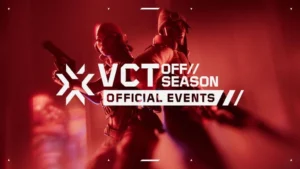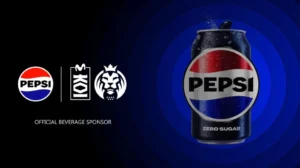OPINION: The current state of Call of Duty esports

The Call of Duty franchise remains a significant player in the first-person shooter (FPS) genre, with its annual releases and the free-to-play battle royale, Warzone, continuing to generate substantial revenue through both sales and microtransactions.
Although Call of Duty primarily targets its casual player base, its esports scene has persisted through the Call of Duty League (CDL) and the World Series of Warzone. The CDL, now in its fourth year, operates with a geolocated franchise system where 12 city-based teams compete throughout the season for a spot in the Championship Weekend. The 2023/24 CDL season concludes in July with the Championship event in Allen, Texas, from July 18th to the 21st. Despite recent shifts in streaming platforms and fluctuating viewership numbers, the league has maintained some of its traditional rivalries and continues to be a notable presence in esports.
As the 2023/24 season kicked off following the release of Call of Duty: Modern Warfare 3, it introduced a new exclusivity deal with YouTube, moving away from its previous presence on Twitch. The CDL’s viewership saw varied results: the first Major of the Modern Warfare 3 season achieved peak viewing figures of 245,437, while the second Major saw a slight decrease to 244,478. The third Major experienced a further drop to 238,499 peak viewers. However, the fourth Major saw a significant decline, with peak viewership plummeting to 109,764 for a match between OpTic Texas and the Miami Heretics.
The drop in viewership for Major four may be attributed to changes in event management. Originally scheduled to be hosted by the Carolina Royal Ravens with live spectators, the event was instead held in Burbank, California, without an audience. This shift likely impacted the overall viewership experience and numbers.
Looking forward, the emergence of the Esports World Cup could potentially influence the future dynamics of Call of Duty esports, adding new dimensions and opportunities for the series.

In 2024, the Call of Duty League (CDL) underwent a significant transition, becoming a fully North American league. This change followed the relocation of the London Royal Ravens to Carolina and the move of c0ntact Gaming’s Paris Legion to Las Vegas. The shift away from international teams has disappointed some fans in the UK and France, who had strong followings. However, UK and European players still participate in the league, such as Jamie ‘Insight’ Craven with the Toronto Ultra and Paco ‘HyDra’ Rusiewiez with the New York Subliners, who finished as runners-up to OpTic Texas at the 2024 CDL Championship.
In terms of viewership, 2024 saw a slight decrease compared to the previous year. The peak viewership for Major 2 and Major 3 in 2023 exceeded 300,000. According to Esports Charts, the 2024 regular season experienced a 29% drop in average viewership compared to the 2023 season. However, viewership for 2023 was still higher than the 2022 season, which was the last year the CDL was exclusively broadcast on YouTube.
The Challengers division, which serves as the second tier of competitive Call of Duty, has struggled compared to the CDL. It relies heavily on third-party coverage and, despite featuring former CDL players and promising amateur talent, the most-viewed Challengers event, the Boston Open, had a peak viewership of 59,656. Subsequent tournaments saw a significant decline, with many events struggling to exceed 10,000 viewers.
Despite these challenges, several organizations continue to support Challengers teams. For example, FC Black, the academy team of FaZe Clan, and the North American organization OMiT, which fielded two teams in the 2024 Challengers Finals, are actively involved.
The CDL has maintained stability in viewership and structure, adhering to its franchise model despite initial skepticism and comparisons to the now-defunct Overwatch League. This structure, along with recent adjustments, has helped the CDL avoid a shutdown and maintain its position.
In late July, the 2024 CDL season concluded with OpTic Texas winning their first championship in seven years. The event, held in front of a fervent home crowd, recorded 283,184 peak viewers as OpTic Texas faced the New York Subliners, a franchise recently acquired by Cloud9, in the Grand Finals. OpTic Texas appeared in three of the five most-watched matches of the tournament. Although viewership numbers were slightly down from 2023, the event’s success was buoyed by OpTic’s enthusiastic fan base and nostalgic elements, including appearances by their 2017 championship roster, signaling a generational shift in Call of Duty esports talent.

Call of Duty esports extends beyond the CDL, with significant developments in the battle royale scene through the World Series of Warzone. The 2023 Global Finals attracted over 300,000 viewers as top players competed for a share of $500,000 (~£390,000) in prize money.
The battle royale scene also saw a major presence at the Esports World Cup, a multi-title esports event organized by the Esports World Cup Foundation and supported by the Saudi Arabian Public Investment Fund. The Warzone segment of this event featured the largest prize pool in the game’s history, with players vying for $1 million (~£779,000). For 2024, the World Series of Warzone will again offer a $1 million prize pool, doubling the amount from the previous year.
Additionally, the Esports World Cup will include a Modern Warfare 3 competition with a prize pool of $1.8 million (~£1.4 million). This tournament will feature 11 CDL franchises, four Challengers teams, and a regional qualifier winner. This event will have the largest prize pool of the 2024 Call of Duty season and will include an open qualification format, which is not currently used in CDL competitions.
During the Call of Duty World League (CWL) era, teams secured their place in the group stage through seeding, and amateur teams had a chance to compete through an open spot in each group. For 2024, the format changed so that only the top eight franchises from the regular season advance to the season-ending competition, eliminating opportunities for amateur teams to participate.
There have been calls for Activision to consider returning to an open esports structure, similar to the Overwatch Champions Series, to allow more opportunities for teams outside of the CDL.
With the upcoming release of Black Ops 6, there’s speculation about potential changes to the competitive structure. The CDL has removed multi-million dollar entry fees, which could pave the way for expanding the league from 12 to 16 teams. The shift from an open ecosystem to a franchise model was met with mixed reactions from fans and players. Despite challenges, including the impact of the COVID-19 pandemic, the Call of Duty esports ecosystem has persisted and is laying the groundwork for a potentially successful 2025 for both the CDL and Warzone.




